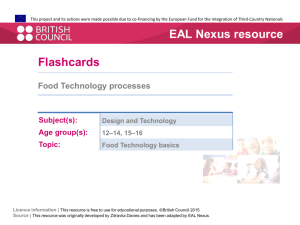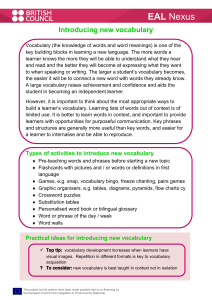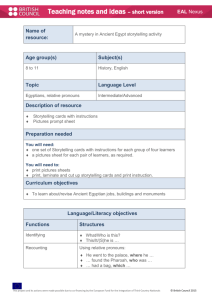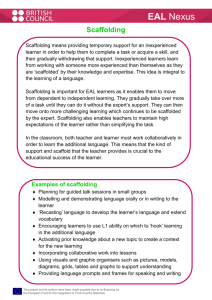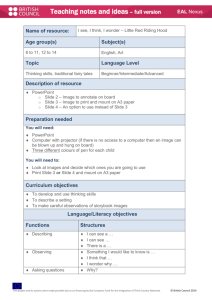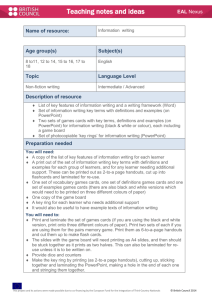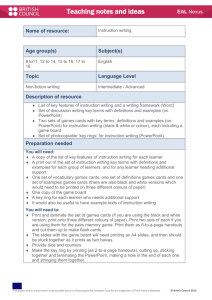Extended version - EAL Nexus
advertisement
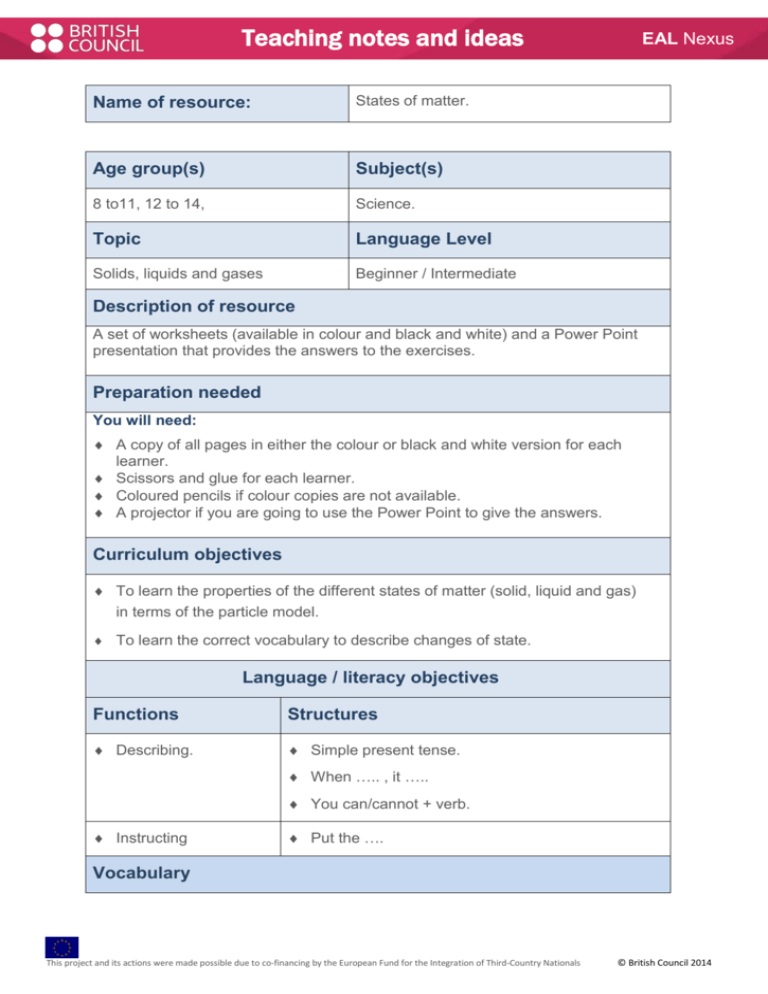
Teaching notes and ideas Name of resource: States of matter. Age group(s) Subject(s) 8 to11, 12 to 14, Science. Topic Language Level Solids, liquids and gases Beginner / Intermediate EAL Nexus Description of resource A set of worksheets (available in colour and black and white) and a Power Point presentation that provides the answers to the exercises. Preparation needed You will need: A copy of all pages in either the colour or black and white version for each learner. Scissors and glue for each learner. Coloured pencils if colour copies are not available. A projector if you are going to use the Power Point to give the answers. Curriculum objectives To learn the properties of the different states of matter (solid, liquid and gas) in terms of the particle model. To learn the correct vocabulary to describe changes of state. Language / literacy objectives Functions Structures Describing. Simple present tense. When ….. , it ….. You can/cannot + verb. Instructing Put the …. Vocabulary This project and its actions were made possible due to co-financing by the European Fund for the Integration of Third-Country Nationals © British Council 2014 EAL Nexus Prepositions: up, down, left, right, top, middle, bottom, above, below, next to, between. Specific words for states of matter: gas, liquid, solid, freeze, evaporate, condense, melt, particle, bonds, vibrate. This resource could be used: as differentiation within class with whole class Ideas for using the resource What to do Give each learner a set of instructions (page two of the document) and the table (page 4) along with some scissors. Learners should be encouraged to work independently or with a partner. They may need to be taught some words like cut if they are at the very early stages of learning English but they should be able to follow the instructions with the help of the visual glossary on page three. Only give out glue when you are happy they have produced the correct diagram. The answers can be checked using the Power Point provided. The first activity and the table to complete with translated words is a way of introducing new vocabulary and using the learners’ first language ability. The following activity matching diagrams to the phrases uses visuals to illustrate the differences between solids, liquids and gases. The final two activities allow pupils to write descriptions of the different states of matter by using substitution tables and unscrambling mixed up sentences. By this stage they should be confident using new vocabulary. These two activities are a way of ensuring that learners are using the correct structures in their writing. Other ideas for making the best use of this resource It may be more useful to spread the work out over more than one lesson so that learners can do the final two tasks later as a form of revision or reinforcement. Possible extension activities Learners could produce their own descriptions of a solid, liquid or gas and read it out to the class for others to guess. This would be a good way of consolidating the knowledge from the previous activities as well as checking if they have learnt the correct sentence structures. This project and its actions were made possible due to co-financing by the European Fund for the Integration of Third-Country Nationals © British Council 2014

